We Have a FLOOR!!!! OMG!!!!1!!1!
We woke up extra-early this morning, because the concrete trucks were getting here before seven. And no kidding, they pulled up at six thirty and began to make a huge racket.
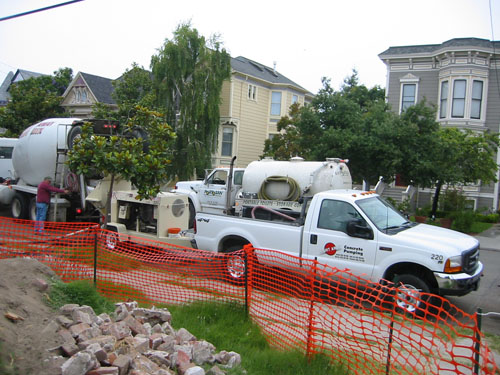
The way concrete works is that you don't really "pour" it, you "place" it, using a pump and a long, flexible hose.
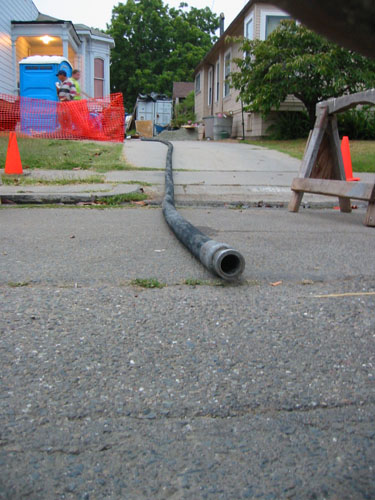
It was actually kind of dark when the guys got here, on account of the overcast weather (great for concrete work!) lately, so they installed a light under the house before starting.
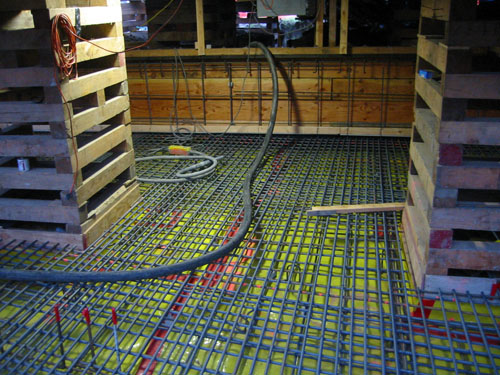
One of the things that needed finishing (and actually was underway during the beginning of the pumping) was the keyway installation. There were basically two lengths of the stuff that needed to be put in, so two guys worked on it while the others began dealing with the concrete.
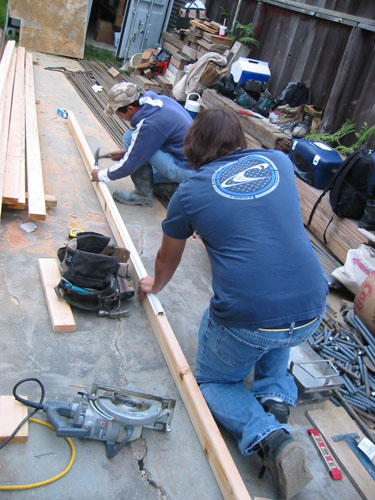
A quick hose hookup and we were good to go.
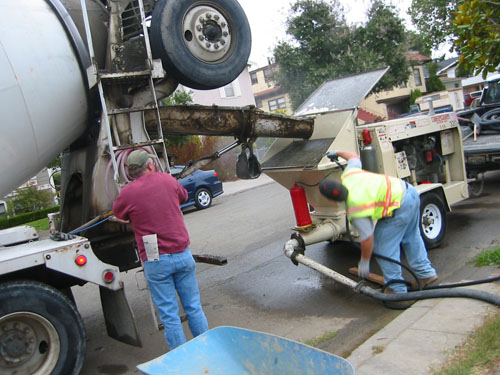
As the concrete was pumped in, they used a vibrator to make it settle down with no air trapped inside.
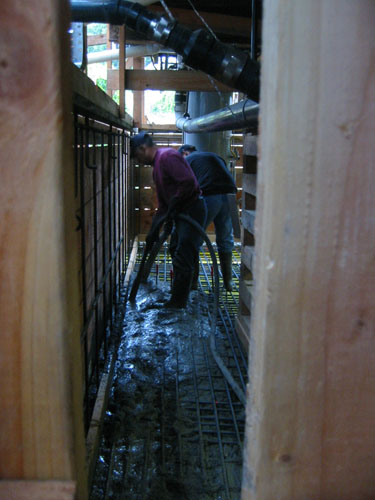
And they used their boots, too. Because concrete is heavy stuff.
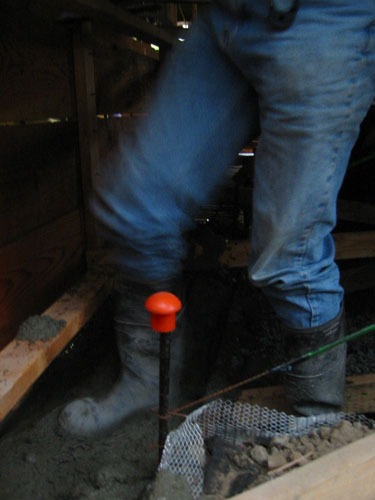
In the mean time, the testing engineer took some concrete to make test cylinders, to make sure the foundation is really as strong as it's designed to be. In school they show the engineers how to do this, with a big hydraulic smusher for testing how strong the cylinders are.
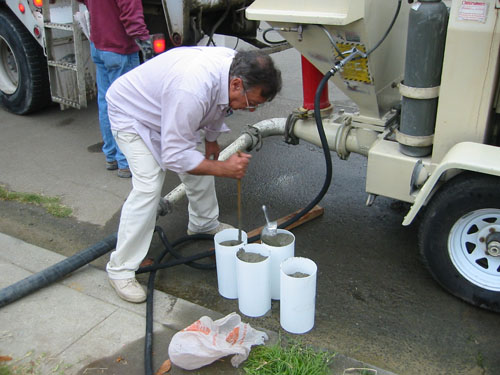
Then there was a lot of pumping concrete and flattening it into a floor.
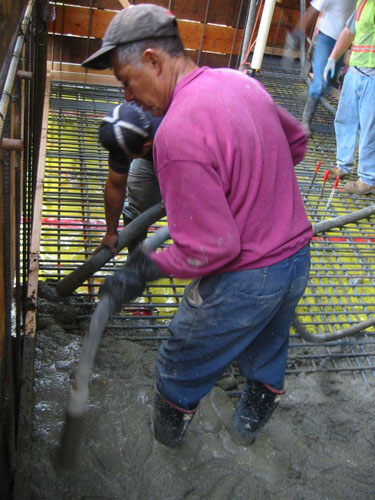
They had to get concrete all over the width of the slab from the inside of the forms, which involved smooshing the stuff through the bottom of the form, helped with the vibrating tool.
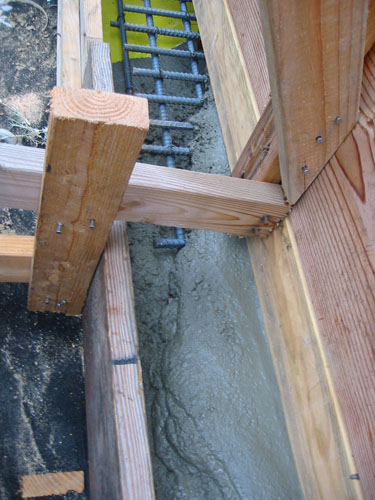
The vibration makes the concrete behave more liquid, much like loose soils like sand behave in a powerful vibration like an earthquake. Or like flour settles when you tap the side of the bowl. So they have the vibrator right next to the end of the hose that is spouting concrete, so that the stuff moves into every bit of the formwork and surrounds the rebar, with no large pockets of air trapped inside.
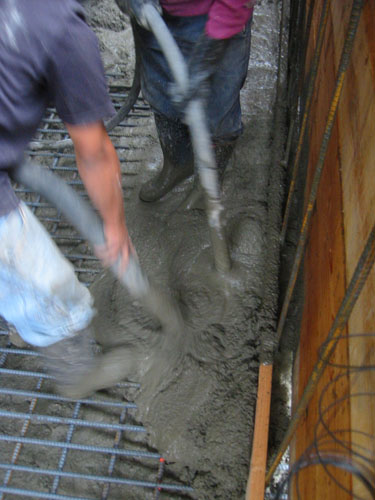
The whole slab was going to be finished to be a nice, smooth floor, but the outside edges just needed a rough troweling to even them out and keep them from holding water.
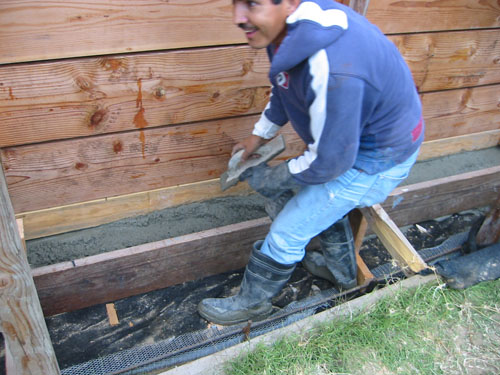
There was a large crew of people at work: two handling the hose and vibrator, and the rest screeding and smoothing the concrete behind them.
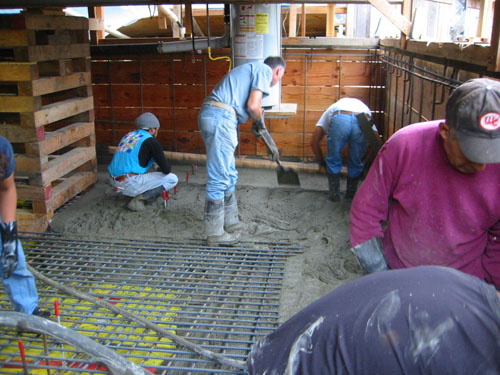
Then it was 8:15 and we had to leave to go to work. Kind of hard to believe so much had happened and we still got to work on time, huh? But we could still watch progress through the day on foundation cam! (Warning, this is 3.6M of heavy concrete action.)
When I got home, the test cylinders were sitting neatly in the driveway...
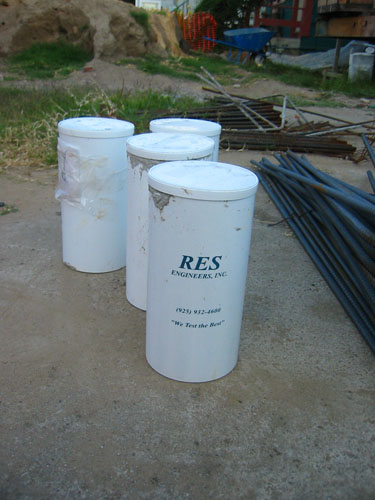
And we had a Real Live Floor!
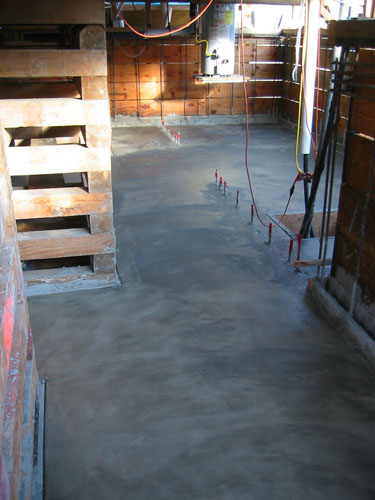
I mean, OMG. I mean, FLOOR. After so many months of pain and suffering and worrying, we finally have a FLOOR. And on Monday, we will have WALLS. It's like some kind of construction Santa Claus came down from the North Pole and pulled it out of a very large, heavily soiled sack.
Also, the finish on that floor is as close to perfect as you can get. It's artwork. I never want to cover it up, it's so smooth and lovely.
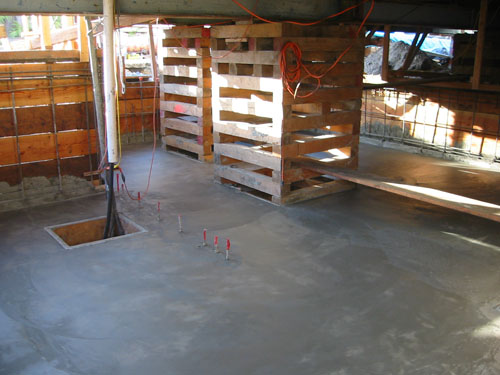
And we don't just have a floor. No, they also began forming the front footings, for the non-basement part of the foundation. They put in more rebar (it looks so tiny and cute compared to what's out back).
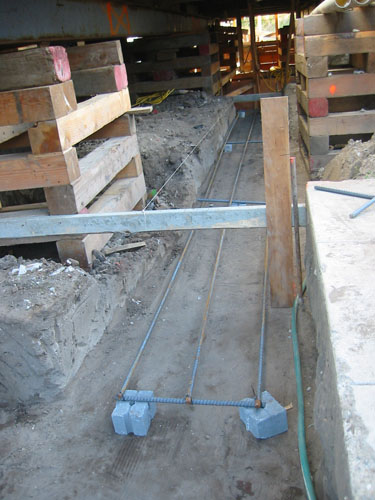
The soil had gotten rained on and grown weeds and slumped after the tarps were removed, so they redug the channels for the footings, making nice, clean edges.
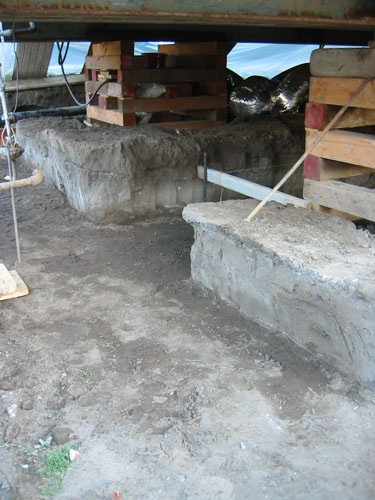
And some formwork (heaven knows we don't need footings as wide as those channels are, or want them, either).
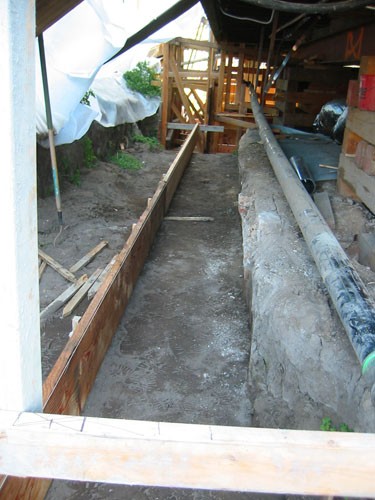
posted by ayse on 08/17/05